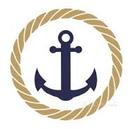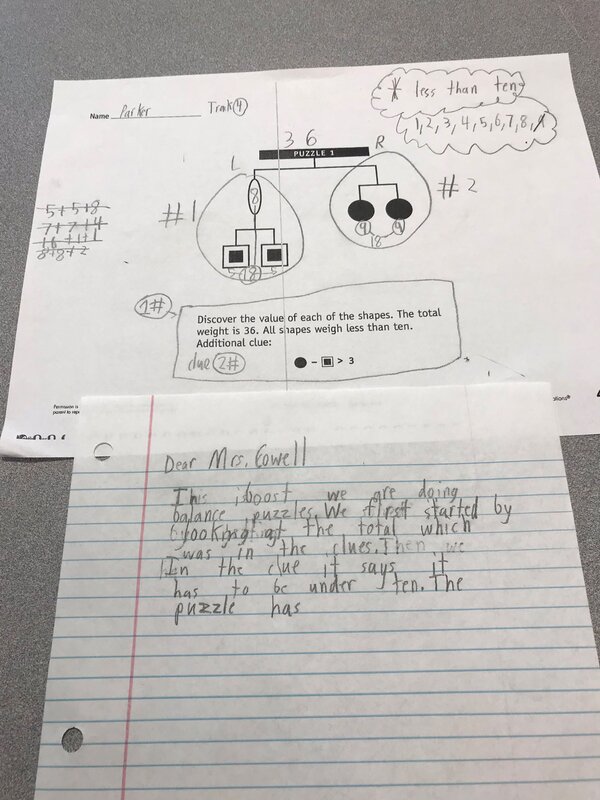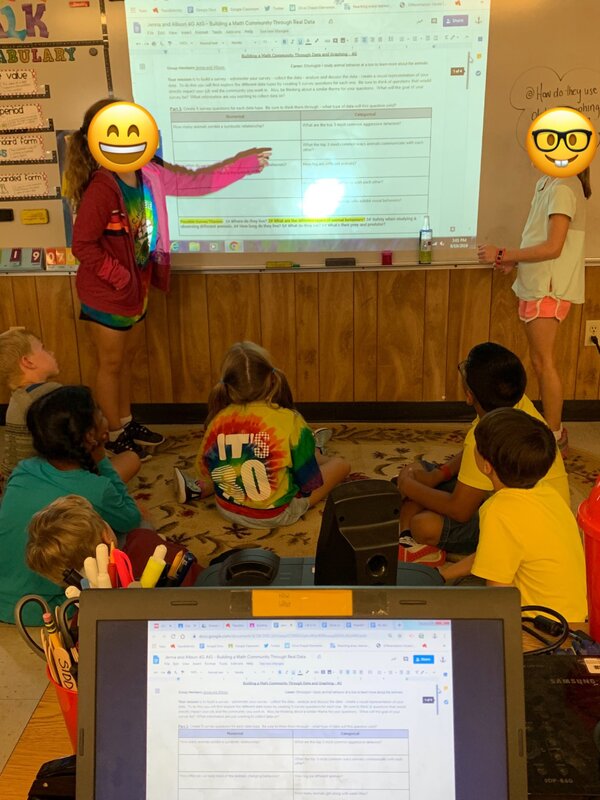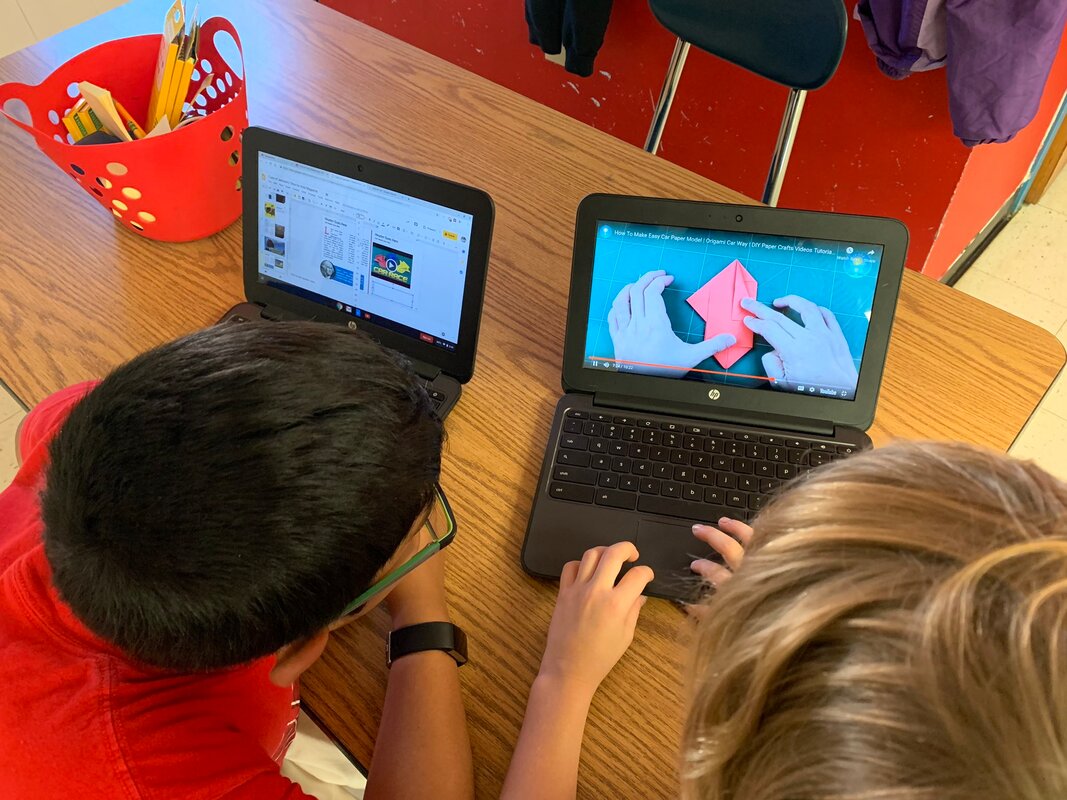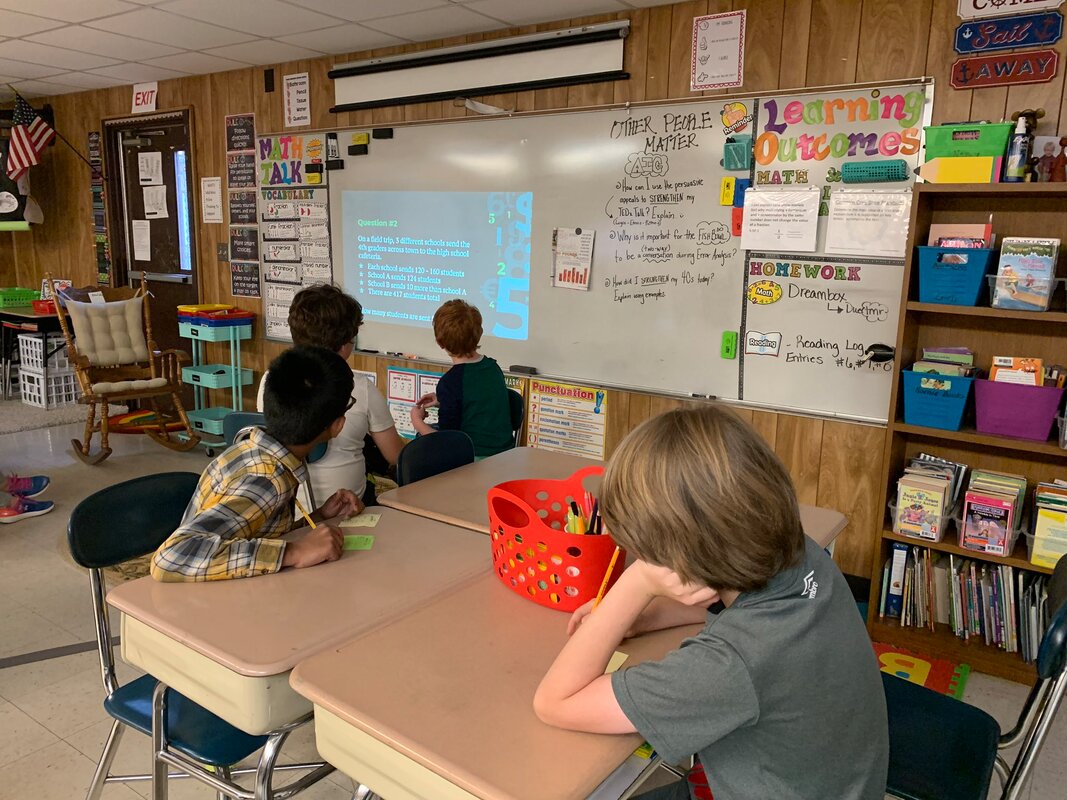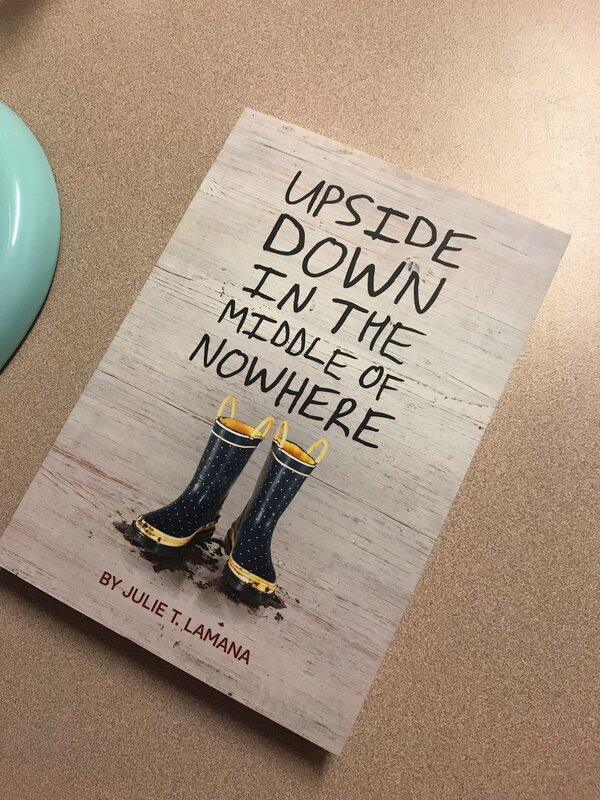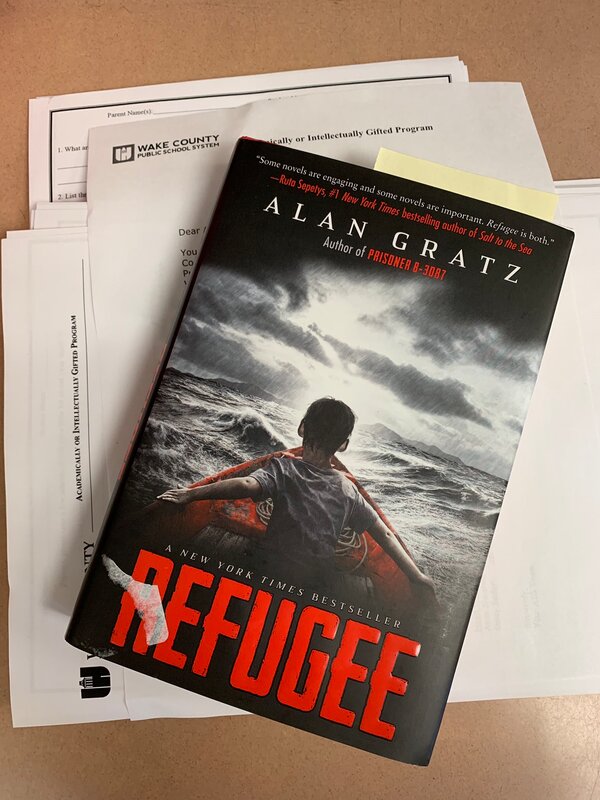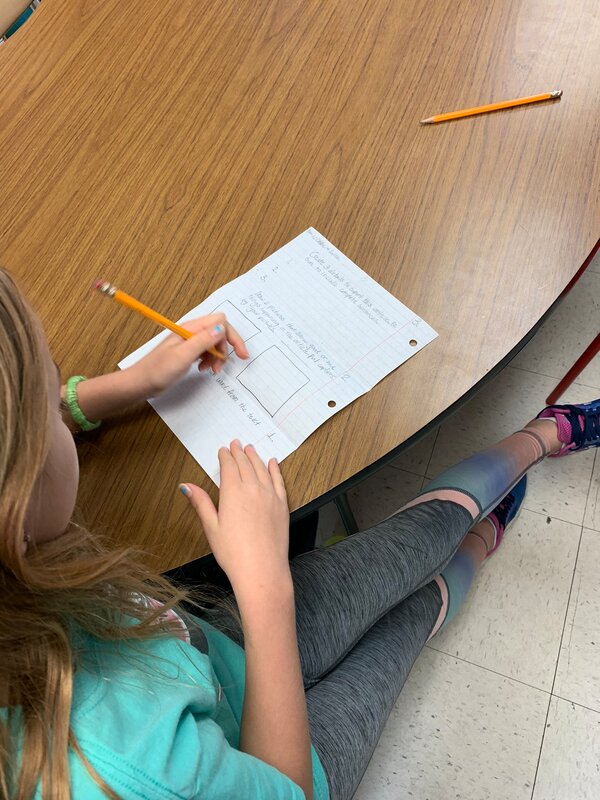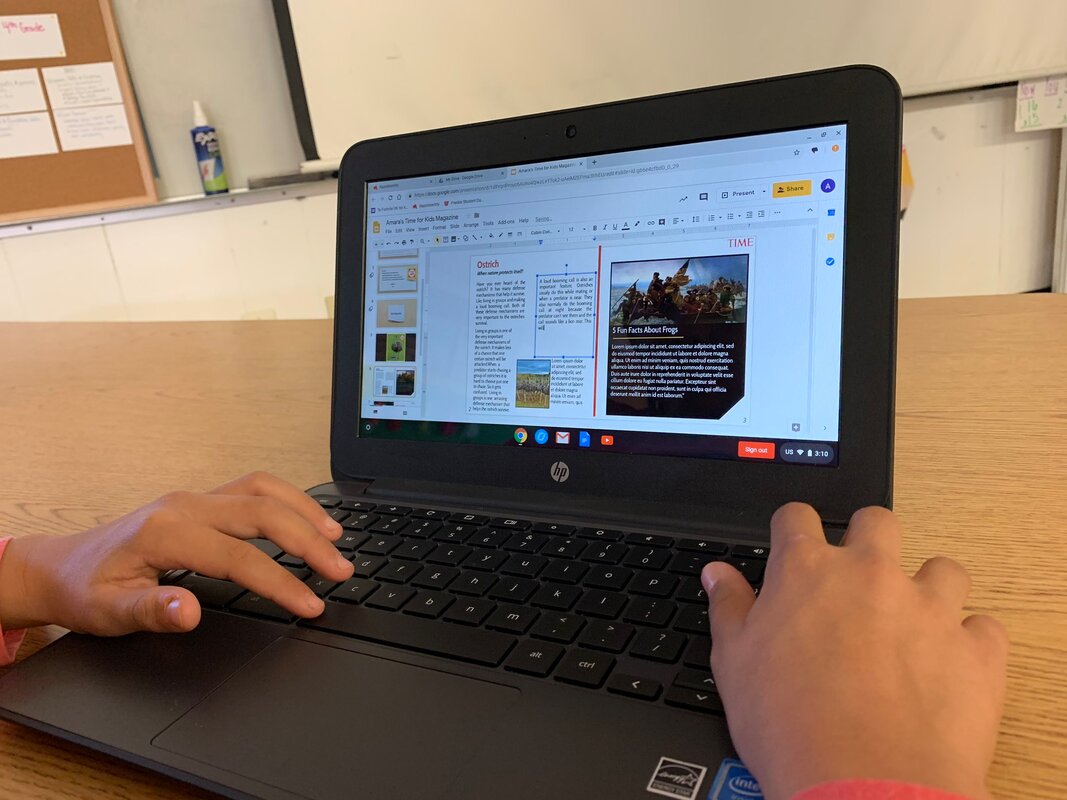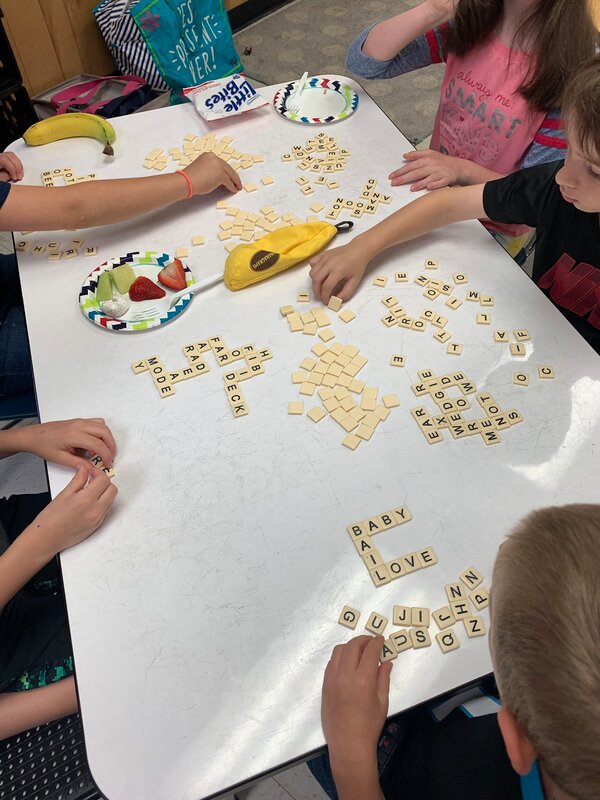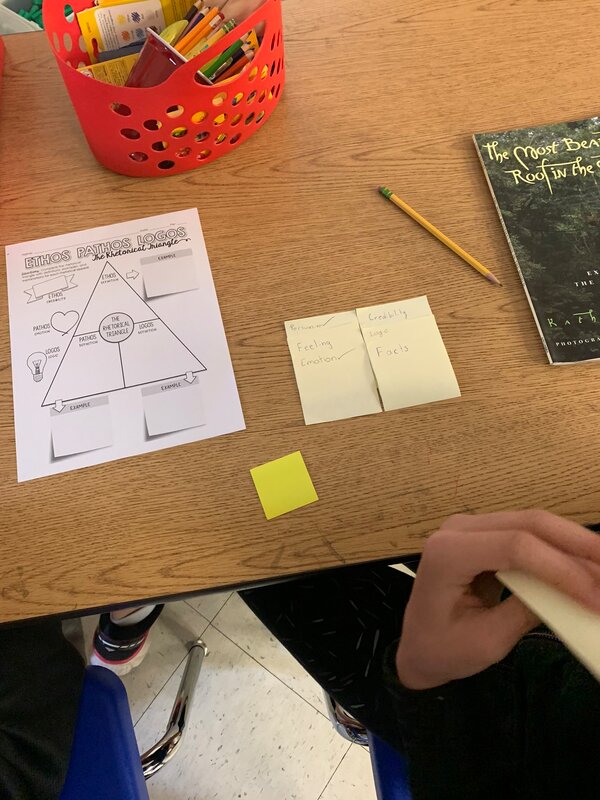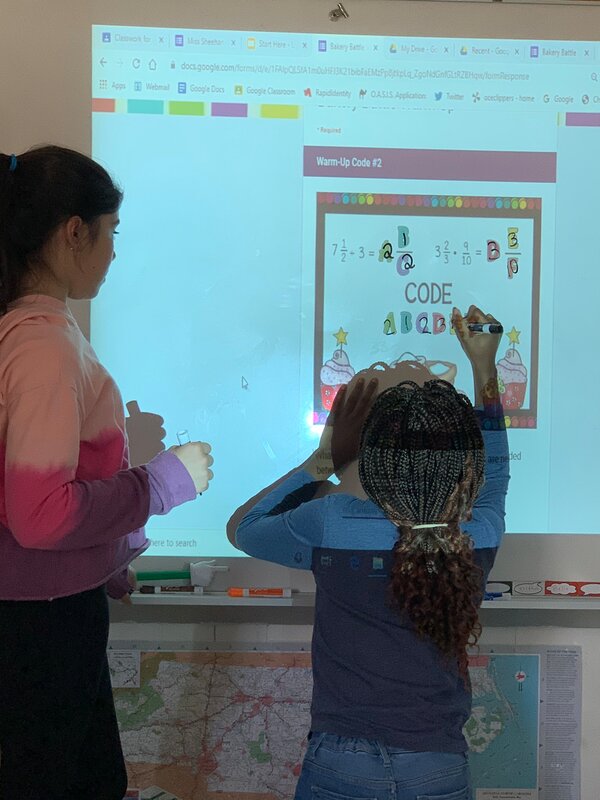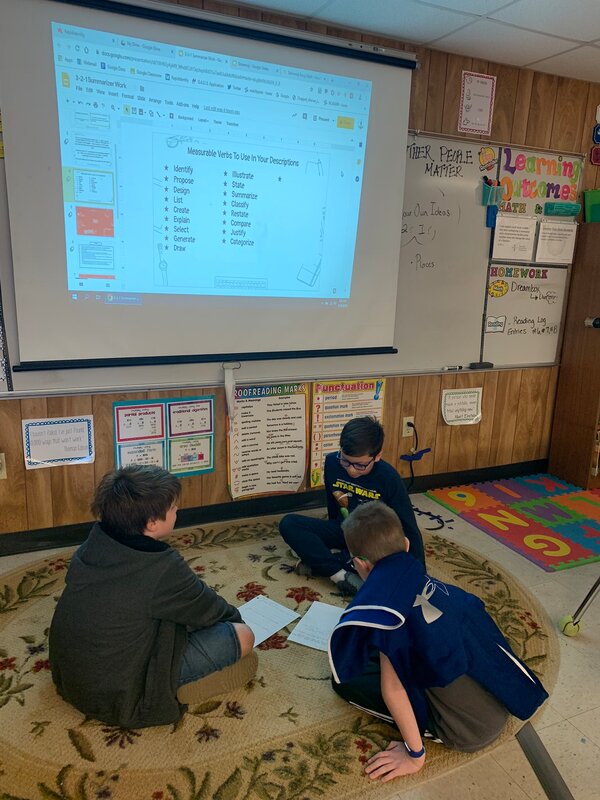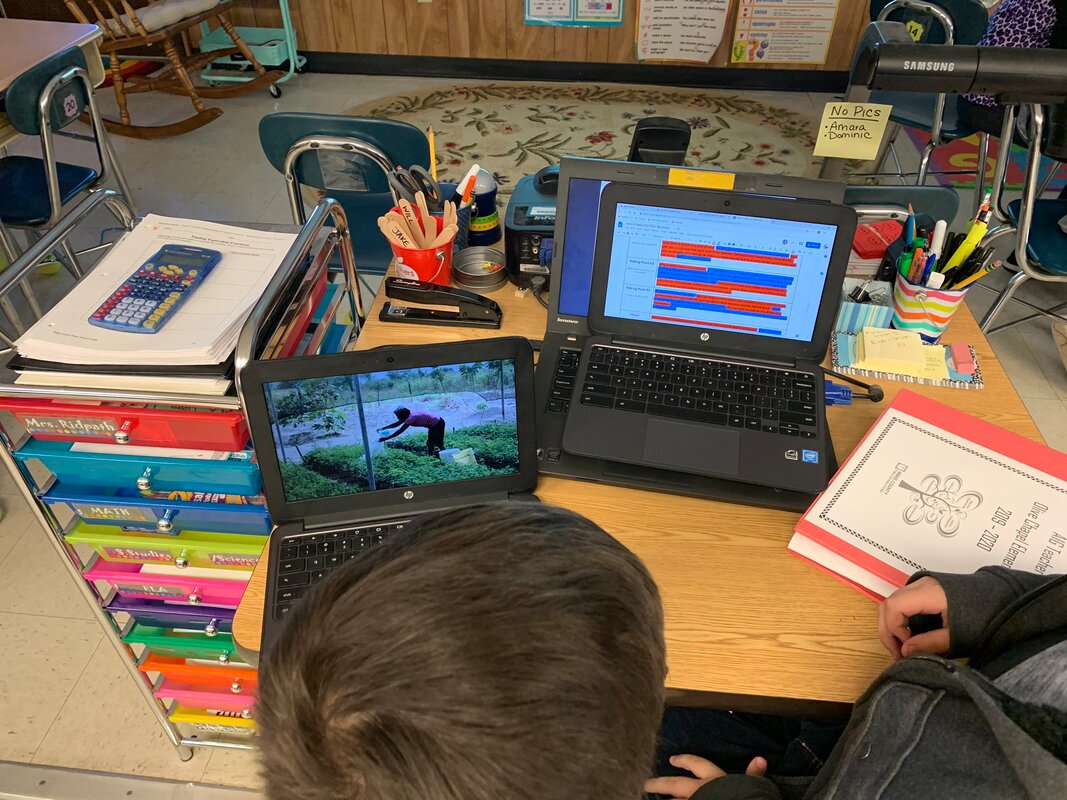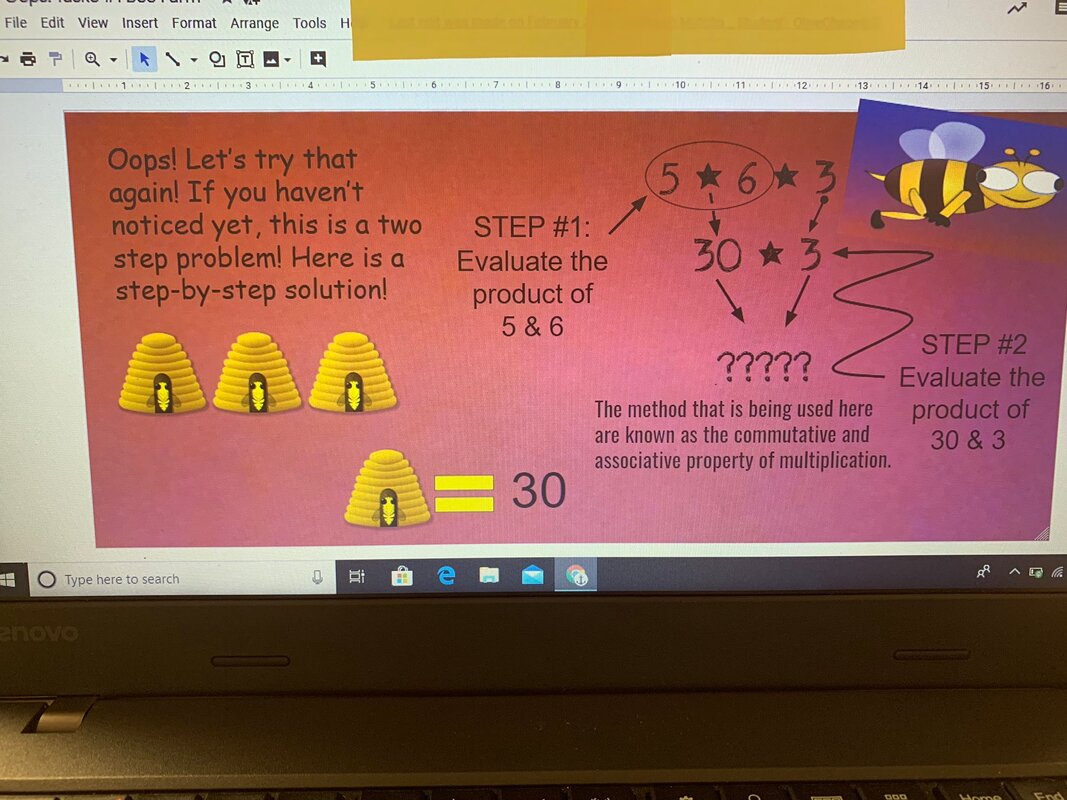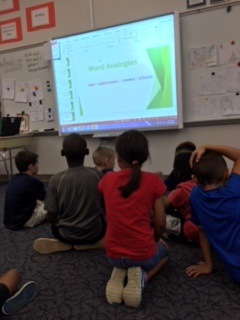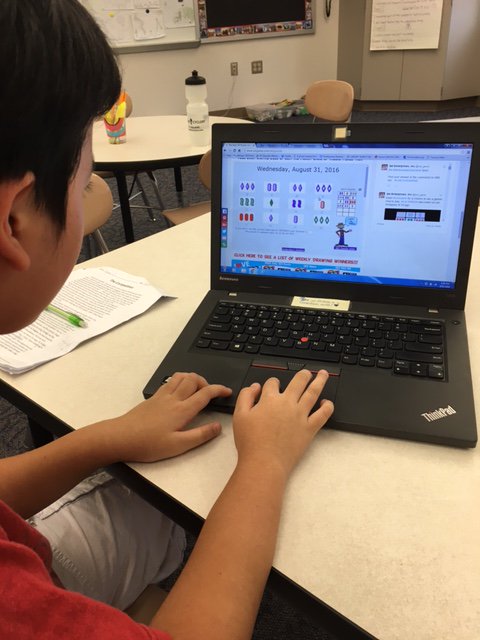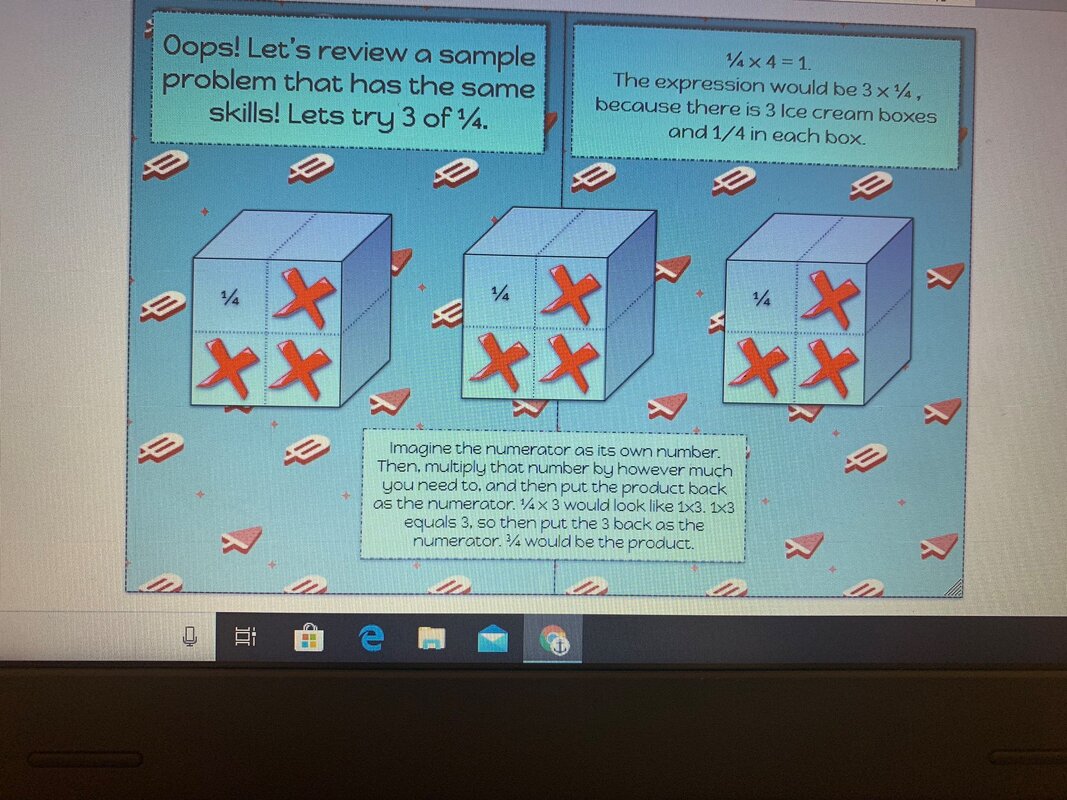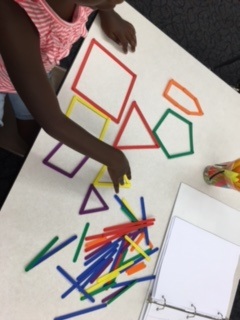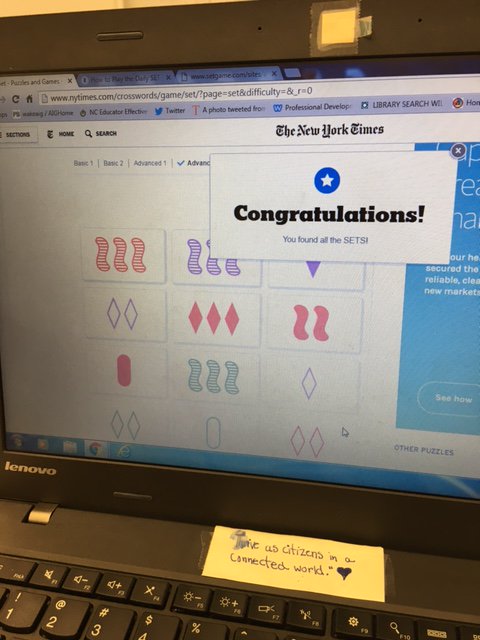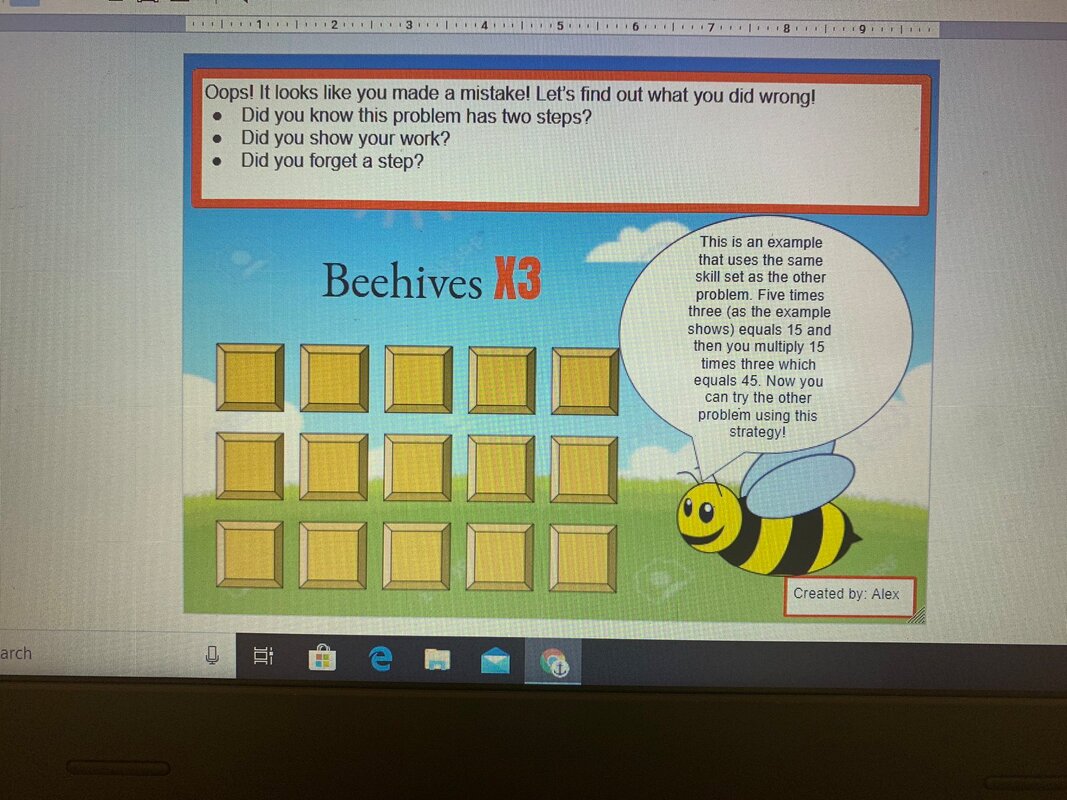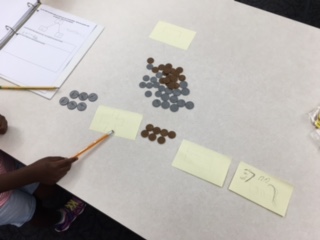What are we working on during AIG DIRECT SERVICE TIME?
2020 - 2021
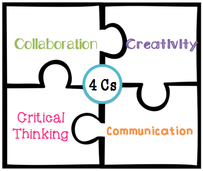
The 4Cs
A daily focus for all AIG students at Olive Chapel is the use of the 4Cs to develop unique student created products and dynamic classroom experiences. The 4Cs are an integral part of every lesson and activity at OCE. The 4Cs include Collaboration, Critical Thinking, Communication, and Creativity. The 4Cs are in many ways the embodiment of what we all need to be successful in school, at work, and as citizens in our communities. They are the solid foundation of good leadership and success in a global society. You can support your student in their own personal development of the 4Cs at home by talking with them about how they are using them each day. And how you use them as an adult at work and at home to be more successful.
Google Classroom
This year we will continue to utilize Google Classroom to enhance and transform our AIG classroom experiences. Google Classroom allows us to collaborate, create, communicate, and use our critical thinking skills more effectively. Students are able to use the devices in the classroom. We will work together each day on how to effectively use Google Classroom and how to be appropriate when online. Students will work on all Google Classroom assignments at school. If they have time, they are free to work on them at home as well. But, this is never required.
Service Delivery
The WCPSS AIG Program provides differentiated educational services that extend and enrich the Common Core State Standards by offering instructional and curriculum modifications that promote student engagement through challenging cognitive tasks designed to integrate and develop critical and creative thinking skills in the student's identified area(s) of giftedness. The regular education teachers and the AIG teacher work collaboratively to provide challenging, rigorous and relevant curriculum and instruction to accommodate a range of academic, intellectual, social and emotional needs of gifted learners. Curriculum connections are emphasized through overarching concepts, issues and themes. Differentiated curriculum and instruction in English/Language Arts (ELA) focuses on literacy including advanced content in reading, writing, listening, speaking and thinking. Differentiated curriculum and instruction in Mathematics focuses on advanced content in real-world, multi-step higher level thinking problems.
All AIG students are served according to their Differentiated Education Plan (DEP). Service delivery can include:
- small group lessons (small pull out sessions directly taught by the AIG teacher in another classroom)
- collaborative teaching (AIG teacher pushes into the gen. ed. classroom during the instructional block and supports the AIG students and teacher )
- consultation/collaboration between the AIG teacher and general education teachers.
Curriculum Standards
Click the link above to access the curriculum standards for each grade and other grade level curriculum resources.
AIG Topics By Quarter
*AIG builds learning opportunities around the grade level standards*
Skills we are always working on improving:
*problem solving *critical thinking *working in team *making real world connections *applying our learning to real life situations
*developing and using responsible digital citizenship skills *explaining our thinking using writing skills and verbal communication skills.
*creating unique products to demonstrate our learning *being self reflective about things we did well and things we can do better
*developing skills to participate as knowledgeable, reflective, creative, and critical members of a literary and mathematical community
*problem solving *critical thinking *working in team *making real world connections *applying our learning to real life situations
*developing and using responsible digital citizenship skills *explaining our thinking using writing skills and verbal communication skills.
*creating unique products to demonstrate our learning *being self reflective about things we did well and things we can do better
*developing skills to participate as knowledgeable, reflective, creative, and critical members of a literary and mathematical community
4th Grade AIG
English Language ARTS
|
Mathematics1st Quarter
Surveys, Data, & Graphing Students will first dig into different graphs and engage in discussions about their data and the information we can learn from them. During this time students will focus on a few guiding questions - 1.) What do you notice about the graph? 2.) What are some data takeaways? 3.) Who might have gathered this data and created the graph? And, why? 4.) How might a reader use the information the graph? 5.) Why did the creator of the graph choose this graphing format (bar, line, picto, tally, etc...) to display the data? Would you have done it differently? Students will then create and write their own survey questions from the point of view of a chosen career. Their survey questions will be written to specifically yield categorical and numerical data. Students will engage in discussions with each other about their questions and explain (with detailed examples) how each will yield a specific type of data. Students will then explore and explain specifically who might ask their questions and why they may need to include them in a possible survey. Throughout this mini-project students will incorporate the different elements and ideas from the career their group chose to focus their survey questions on. Throughout all of this work students will be focusing on collaborating in small groups, communicating clearly with their peers, and keeping an open-mind about all ideas and opinions expressed during our time. 2nd Quarter 3rd Quarter 4th Quarter |
5th Grade AIG
ENGLISH LANGUAGE ARTS
|
MATHEMATICS1st Quarter
Surveys, Data, & Graphing Students will first dig into different graphs and engage in discussions about their data and the information we can learn from them. During this time students will focus on a few guiding questions - 1.) What do you notice about the graph? 2.) What are some data takeaways? 3.) Who might have gathered this data and created the graph? And, why? 4.) How might a reader use the information the graph? 5.) Why did the creator of the graph choose this graphing format (bar, line, picto, tally, etc...) to display the data? Would you have done it differently? Students will then research how different careers use data and graphing to do their jobs. In small groups students will choose one career to focus on during this mini-project. They will create and write their own survey questions. Their survey questions will be written to specifically yield categorical, numerical, and change over time data. Students will engage in discussions with each other about their questions and explain (with detailed examples) how each will yield a specific type of data. Students will then explore and explain specifically who might ask their questions and why they may need to include them in a possible survey. Throughout all of this work students will be focusing on collaborating in small groups, communicating clearly with their peers, and keeping an open-mind about all ideas and opinions expressed during our time. 2nd Quarter 3rd Quarter 4th Quarter |
3rd Grade
Learn more by visiting our Explorers page by clicking HERE.
|
1st Quarter - Explorers
ELA: Math: |
4th Quarter - AIG
|
AIG students in action!
Step into the life of an AIG student by viewing the pictures below. Enjoy!
*Under construction!*
|
AIG students love analyzing word analogies! They work in teams to discover the connections between words by sharing their prior knowledge. Some of our second graders are able to create their own examples and explain them to the whole group!
AIG students work in small groups to see who can conquer the daily SET game on the Wall Street Journal's game page. It's all about your visual perception - have you tried playing? Try it!
|
AIG Math students explore shapes using AngLegs! These hands-on pieces allow them to create many different sized shapes. After much creation they will write about their shapes using describing words and complete sentences.
Congratulations! A group pulls out a win after conquering the daily SET game on the New York Time's webpage. This win was a mix of visual perception talent and good, clear peer communication. Kudos to all the teams for their efforts!
|
AIG students explore the connection between addition and subtraction using coins! This student was able to create her own story problem using math mountains and coins. When she finished her story she asked to use a calculator to add up all the money she had used. What a great activity that used a few different real world skills!
|
